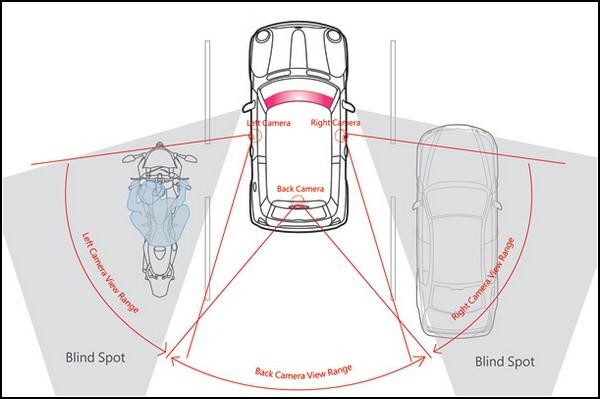Rules of rebuilding in the stream
There is a big risk to become a culprit of an accident, if you do not know how to correctly rebuild. Consider tips on maneuvering in a dense stream.
PDD
The rebuilding provision is located in Chapter 8 traffic rules. Item 8.4 reads: The driver who wants to change the traffic strip must be given in the TC road moving in the passing direction without changing the direction of movement. With the simultaneous rebuilding of two cars, the right of the priority maneuver has a driver who is on the right side. Consider the rule on specific examples.
- The car is rebuilt in your row, you do not change the direction. According to traffic rules, you are not obliged to give up. You can do it at your own desire, but you will not be the culprit.
- You wish to take the band, at which the car is straightforward behind you. In this case, you must give him the road or increase the distance not to create it to interfere with rebuilding.
- You are tuning on to the left strip. The car in this row shows the turn signal that he wants to take your row. In this case, you have an advantage.
- You are tunable to the right row. If at this moment the driver from this band is rebuilt into your row, you must give him the road. There is a rule - "interference right."
In general terms, paragraph 8.4 can be expressed by the following theses:
- if you do not want to rebuild, it is not required to give up according to traffic rules;
- when rebuilding to the right, you must in any case give way to the road ("interference right");
- when rebuilding to the left simultaneously with the driver who wanted to take your lane, you must skip you.
Rebuilding
Stages of changing direction:
- assessment of the road situation;
- turning on the turn signal;
- control view in the rearview mirror;
- rebuilding, turning off the rotation pointer.
Many drivers believe that it is dangerous to rebuild only in a dense stream. The error lies in the fact that excessive relaxation when driving on unloaded roads is dulling the concentration. Risk risk does not notice going behind a motorcycle or leave the car in the dead zone without attention. Therefore, rebuilding in any situation requires the driver of maximum concentration and confidence in the maneuver.
How to make sure the maneuver security
The main complexity when changing the strip is the correct assessment of the road situation. You must make sure that when rebuilding in the area you do, another vehicle will not be. To do this, it is very often not enough to see the rearview mirror immediately before starting the maneuver. First, there is a possibility that another car is located next to your car in the dead zone.
The dead zone is a situation at which the object disappeared from the side mirror of the rear view, but not yet appeared in the side window. Always this zone is wider from the passenger mirror.
Secondly, when a closure look, it is impossible to estimate the speed of approaching the next car following you. When you look in the mirror, the distance will really be sufficient for rebuilding. But by the beginning of the maneuver, the car will have time to get closer to you on an unsafe for maneuver. 
Implementation maneuver
To avoid accidents, it is necessary to prepare for rebuilding:
- if there are no cars in the rearview mirror, you need to look into the side windows. It is necessary to do this so as not to lose control of the control of the vehicle and be able to react to maneuvers ahead of the running machine. You need to make sure that there are no cars in the dead zone;
- with dense motion for rebuilding, you need to use "pockets" (sufficient for maneuver interval between tightly running cars). To do this, wait until the car, after which is possible rebuilding, will be out of you. Such a maneuver can be considered safe, since you will make sure that there is no other vehicle for a particular car, and therefore the unpleasant surprise is not waiting for you in the dead zone;
- if you have noticed the car running along the strip, be sure to look in the mirror after 2-3 seconds, to adequately assess its speed. With a single look, it is impossible to make it, and if we focus on the objects in the rear view mirror, control over the situation in front of you is lost. Remember that the road situation in a dense stream is changing every second;
- when rebuilding in a row, the flow of which is moving at a greater speed, the maneuver must be made with ahead. After you have taken the strip, your speed must match the flow rate. In winter, with a beacon and slippery road, accelerate only on its lane. Otherwise, there is a risk of drift. With a sufficient coefficient, the clutch can be accelerated even during rebuilding.
To reduce the dead zone, you should properly configure the rearview mirrors. With proper adjustment to the Middle Edge of the mirror, you must see a small protruding part of the stern. When installing the angle of the vertical inclination, the balance must be observed. If we tilt the mirror too low, then decrease the blind zone, but you lose sight of traveled cars. Situations will be aggravated even more when descending from the slope.
Never change 2 lanes for one reception, as you can not adequately appreciate the road situation. Strip change must occur smoothly. Now you know how to correctly rebuild so as not to get into an accident.














